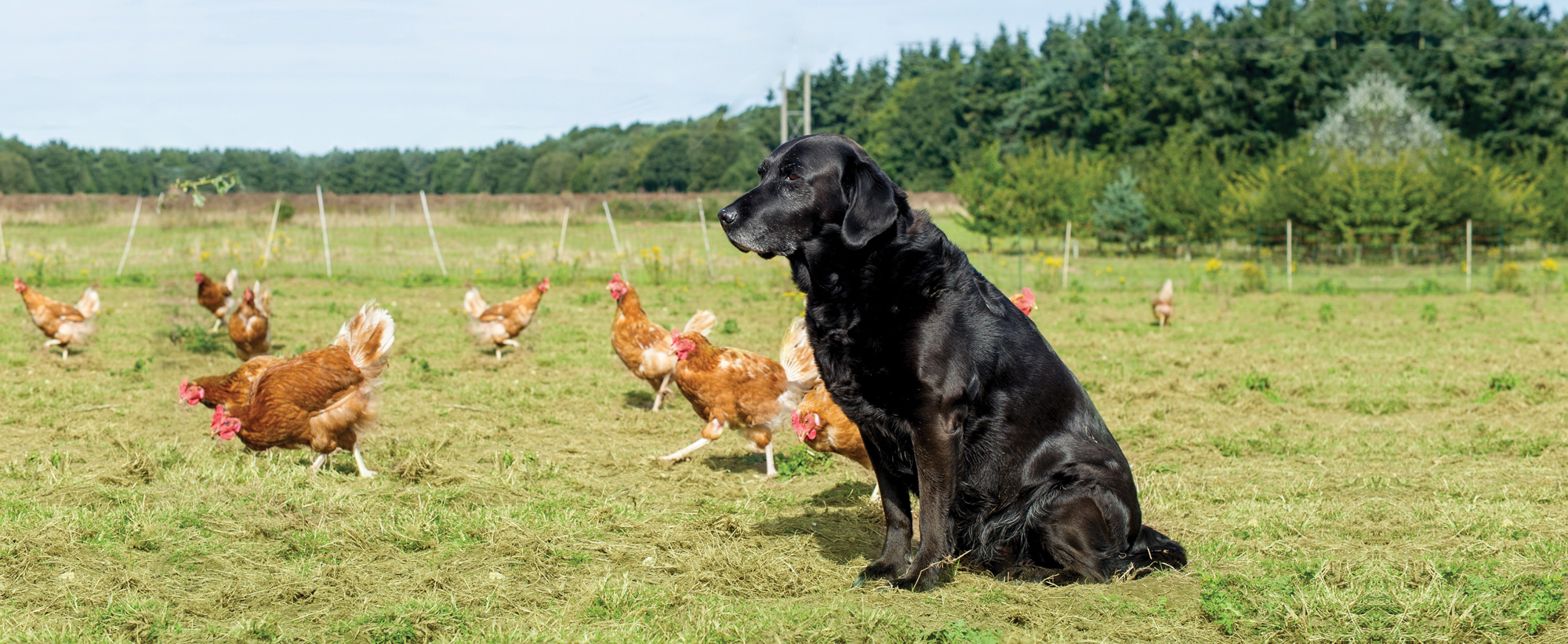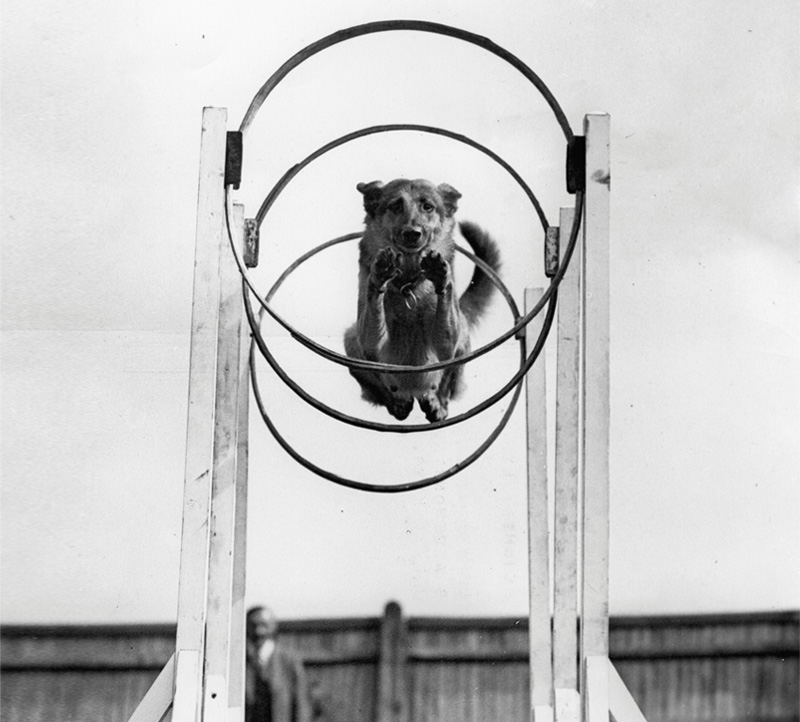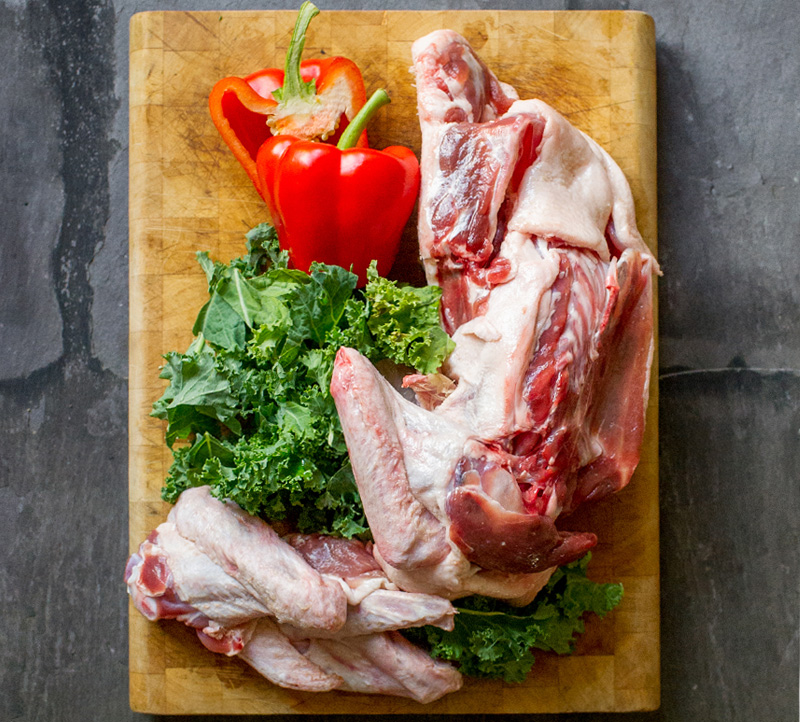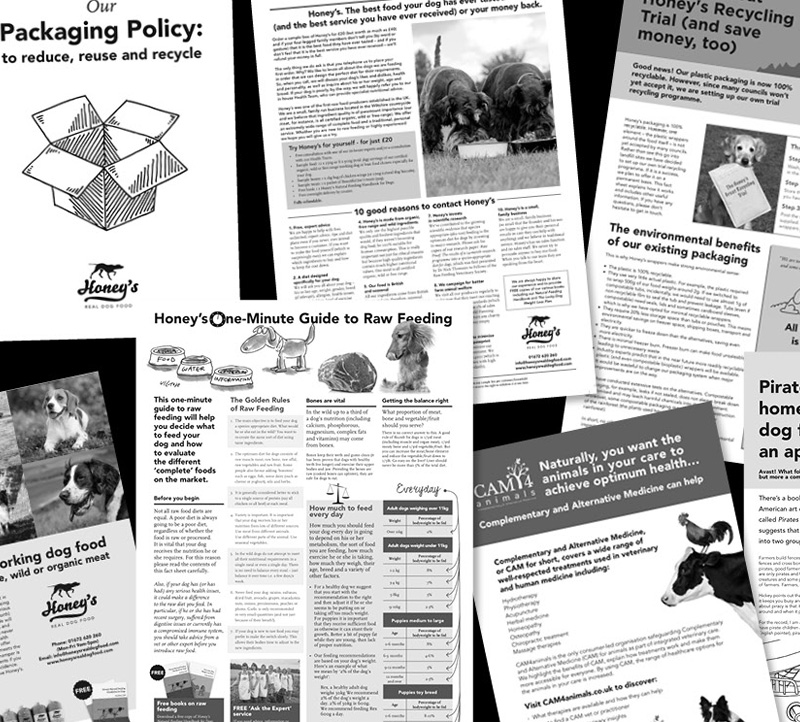If you look after an older dog you may be wondering:
Should you switch him or her to a natural, raw food diet, even if he or she has always eaten canned or dried food?
Do elderly dogs require specially formulated food?
What is the optimum diet for an older dog?
In this article, we answer these and any other questions you may have about feeding older dogs.
Dogs are leading shorter, less healthy lives
In the past dogs lived longer (and healthier) lives.
To quote Dean Ricard of the Canadian Association of Raw Pet food Manufacturers: ‘Fifty years ago, dogs were considered geriatric at age of 12 (average size dog). Now they are considered geriatric at age of 8. Dogs are put on a geriatric formula at a seemingly younger and younger age, and seem to age faster.’
Why?
There are several possible reasons including overbreeding, overuse of vaccinations and other medication, less exercise and – crucially – diet.
It is no co-incidence that ever since mass-produced, highly processed canned and dried dog food became widely used, which was really in the 1960s, canine life expectancy has been steadily falling.
Nor is it a co-incidence that a growing number of dog lovers have been switching away from mass-produced, highly processed canned and dried dog food to a raw, natural diet.
Do senior dogs need a special diet?
As dogs get older and less active they generally need fewer calories.
However, just like humans, they still require the same nutrients regardless of their age. In other words, their diet should include the identical protein, fats (polyunsaturated), vitamins and minerals.
Indeed, as they move through the canine equivalent to ‘retirement’, they require more bioavailable (aka digestible) nutrients to continue to support their immune system against the natural process of aging.
A raw, natural diet has the advantage here because:
- It is easier to digest.
- Less time and energy is spent on converting the nutrition.
- There is less strain put on the digestive tract and the organs.
One of the major factors identified in aging, and cancers, are free radicals.
Free radicals are highly reactive molecules found all around us that can cause oxidative damage to our cells.
How can we stop free radicals from doing damage?
The only proven method of slowing down the aging process is antioxidants.
These are molecules that inhibit free radicals and they are found in living foods such as fruits and vegetables.
Crucially they are destroyed by cooking and other heating processes.
Feeding your dog raw food gives him or her access to antioxidants, which, in turn, will help to slow down the aging process.
Don’t be fooled
Unfortunately, when it comes to feeding senior dogs the pet food industry has not behaved responsibly.
Huge multinational pet food companies have spent the last few years (and tens of millions of pounds) persuading dog lovers that their four-legged family members ought to be eating specially formulated foods.
While it is true that older dogs sometimes benefit from certain, natural additions to their food (to help with, for example, arthritis), the specially formulated, processed ‘senior’ foods only benefit one group: the manufacturers.
Those of us who believe in raw feeding feel that the big pet food companies must share some of the responsibility for the different issues that many elderly dogs face.
Many older dogs suffer as a result of years of eating poorly.
To quote the holistic vet, Dr. Judy Gruenstern:
‘Their bodies are a fat ball of inflammation from a lifetime of free choice, dry, processed kibble, devoid of anything fresh! Their eyes are dull, ears are gooey and puffy, joints crunch with arthritis, fur is dry, belly is pendulous, nails are brittle, anus is red, glands are impacted, stool fluctuates from loose to hard, they’re constantly panting and the water bowl is always empty!’
Why a raw food diet is so important
There are, of course, all sorts of ways in which you can ensure that any senior dog in your care enjoy a healthier and longer life.
For example, you could avoid unnecessary vaccination and use of steroidal and non-steroidal anti-inflammatory drugs.
One of the most valuable (perhaps the most valuable) action you can take, however, is to switch your senior dog to a natural, raw (aka species-appropriate) diet.
Feeding older dogs a raw diet can help prevent and improve all sorts of common disorders, including:
- Dental disease
- Gastrointestinal disease
- Liver disease
- Kidney disease
- Hormonal disease
- Skin disease
- Obesity
- Arthritis
- Cancer
Moreover, it is never too late to make the switch.
You can read more about the benefits of raw feeding in this article: Why raw?
Switching the older dog
In terms of the switch itself, we recommend:
- Taking it slowly. Older dogs may need more time to switch.
- Before you make the switch start adding a little probiotic (live yoghurt, for example) to the existing food for a week or two. This can aid the transition.
- It is probably best not to mix the existing dry or canned food with the new raw diet as this can cause an imbalance.
- Instead of feeding in a single meal every day – or even two meals – divide the food into between four and six portions and feed throughout the day.
- Many older dogs don’t like cold food! Serve at room temperature or even brown very slightly (not the bones).
As an aside, some older dogs may need longer to get used to eating raw bone. If stools are hard and chalky, try reducing the amount of bone you are feeding and reintroduce it slowly.
You will find more tips on switching in our article on the subject: Switching.
What to feed
In terms of what to feed we recommend whatever raw, natural diet you favour.
We hope, of course, that you will choose Honey’s.
It is important to make or choose food that uses the highest possible quality of ingredients.
Such ingredients will have higher nutritional values and will also be free of harmful anti-biotics, preservatives, insecticides etc..
We also recommend a balance of about two thirds raw meat and bone and one third vegetable and fruit.
If you are planning to make your own food you may find this article is of assistance: DIY.
How much to feed
There is no hard and fast rule when it comes to quantity.
You fill find tips on feeding quantities here: Feeding guide.
In conclusion
Many people who have switched an older dog to a raw food diet report all sorts of immediate benefits including:
- More energy and vitality.
- Improved coat.
- Reduced scratching/itching.
- Better dental hygiene and oral health.
- Improved digestion.
Please remember that we will be happy to advise you on any aspect of your dog’s health and diet and that there is no need for you to become a customer.




